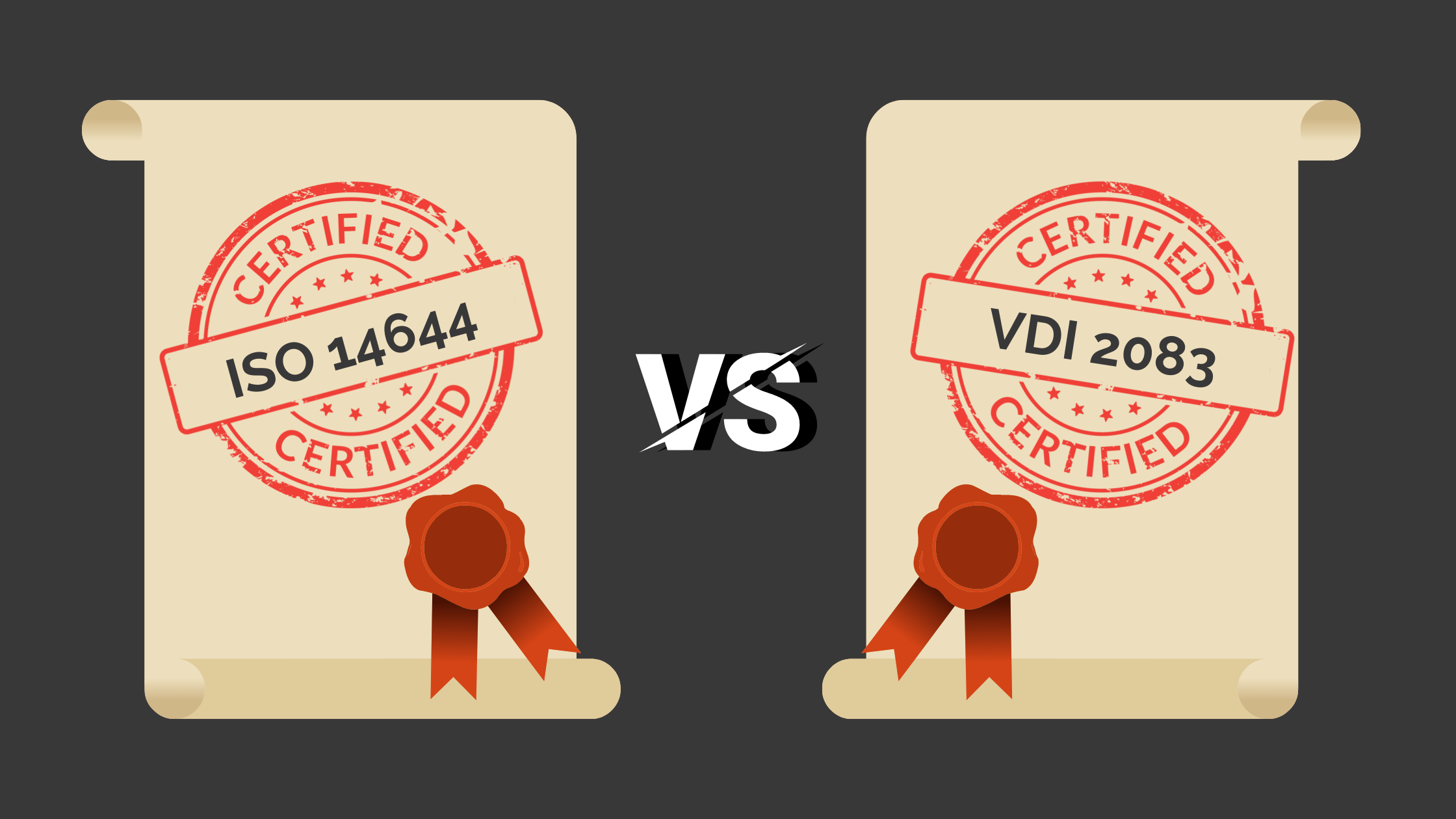
02 Aug Difference Between ISO 14644 and VDI 2083
Continuous development and integration of research findings and practical experiences are crucial for establishing standardized descriptions of cleanroom technology processes and specifications. The ISO standard family 14644 and VDI 2083 series of guidelines are widely used in this field. Classifying cleanrooms based on criteria, requirements, air purity, and qualification involves considering individual areas, such as room planning, ventilation technology, surface cleanliness, and staff clothing. The ISO 14644 and VDI 2083 guideline series are essential for evaluating cleanroom areas and establishing standardization measures.
In this blog article, we provide both series of standards and discuss their similarities and differences.
What is ISO 14644?
ISO 14644 is a set of international standards developed by the International Organization for Standardization (ISO) to ensure cleanliness requirements in controlled environments, particularly in industries like pharmaceuticals, healthcare, microelectronics, and aerospace. The standards consist of two parts: ISO 14644-1 and ISO 14644-2. ISO 14644-1 classifies air cleanliness by particle concentration, defining classes based on maximum allowable particle counts. ISO 14644-2 provides guidelines for monitoring and testing cleanrooms, outlines sampling, measuring, and evaluating airborne particles. Other parts cover cleanroom design, construction, operations, garments, and cleaning techniques. These standards aim to minimize contamination risks and maintain product quality and safety in controlled environments.
What is VDI 2083 for cleanroom technology?
Clean room technology is essential in microelectronics, automotive, and pharmaceuticals. It requires high-quality product development and manufacture, with various norms and guidelines ensuring standardization. The VDI (‘Verein Deutscher Ingenieure’) 2083 series, edited by the Association of German Engineers, was created in the 1980s to control particle sources, contamination factors, and personnel. It covers areas like surfaces, ultrapure media, quality assurance, and molecular contamination. The guidelines offer practical relevance, application notes, explanations, and national specifications.
Cleanroom Classification ISO 14644-1:

Comparison between ISO 14644 and VDI 2083:
ISO 14644 and VDI 2083 are distinct cleanroom standards, providing guidelines and requirements for classification and testing, but differing in terminology and criteria.
The strength of the discrepancies between ISO 14644 and VDI 2083 is one of the most noticeable. While the ISO 14644 directive family guidelines encompass cleanroom technology in only ten parts, the VDI 2083 family, with over 20 distinct sheets, represents the world’s most complete set of rules for the numerous cleanroom elements and areas.
While ISO 14644 is considered an international standard, the VDI guidelines are only national. Nonetheless, Austria and Switzerland have embraced the VDI 2083 in order to encourage cleanroom technology standardization. Several other countries have expanded ISO 14644 with unique criteria that must always be considered in international collaboration.
In a Nutshell:
VDI 2083 is based on the ISO 14644 set of standards and does not contradict it. The VDI 2083 series of guidelines describes clean room technology in greater depth, and the specifications of the series of standards are deepened if necessary.


Sorry, the comment form is closed at this time.